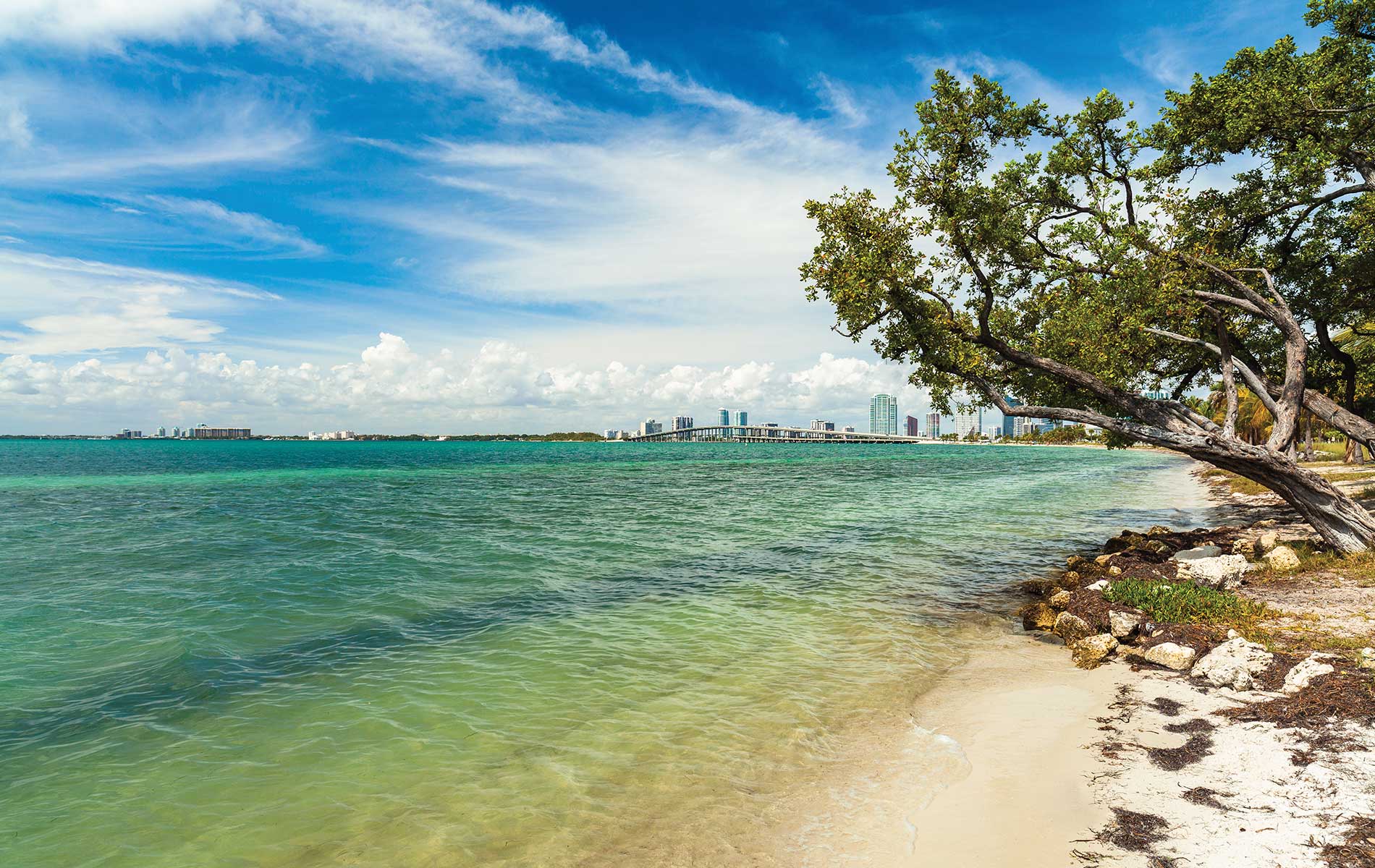
vie-magazine-virgina-key-beach
Historic Virginia Key Beach Park just off the coast of Miami Beach, Florida Photo courtesy of Historic Virginia Key Beach Park
Virginia Key Beach – Sand, Sea, and Civil Rights
By Emme Martin | Photography courtesy of Historic Virginia Key Beach Park
The Past and Future of Virginia Key Beach
As humans, we all share God-given rights to live our lives. These include the rights to breathe, relax, smile, play, and, one of our personal favorites, swim in the ocean. If you have the good fortune to call the beach your home or to visit one of America’s many beautiful coastlines, you understand the immense pleasure that comes from a day spent soaking up the sun and frolicking in the waves. The beach brings a sense of peace and joy to all who are lucky enough to spend their days this way.
Founded in 1896 and built predominantly by people of color, the City of Miami failed to extend this fundamental right of sun and sand to the Black community for many years. By 1920, as the city was growing, Miami prohibited people of color from enjoying miles of beaches, for only the white population was allowed. The 2020 Oscar-nominated film One Night in Miami is set in 1964 when Miami was still segregated. The film documents iconic Black figures Jim Brown, Sam Cooke, Cassius Clay (Muhammad Ali), and Malcolm X before and after Clay’s legendary victory in the boxing World Heavyweight Championship. Some of the injustices Black people faced during these times are highlighted in the movie; these include isolated hotels, limited social areas, and Virginia Key Beach being the only safe haven where Black families could gather, relax, and play by the ocean.
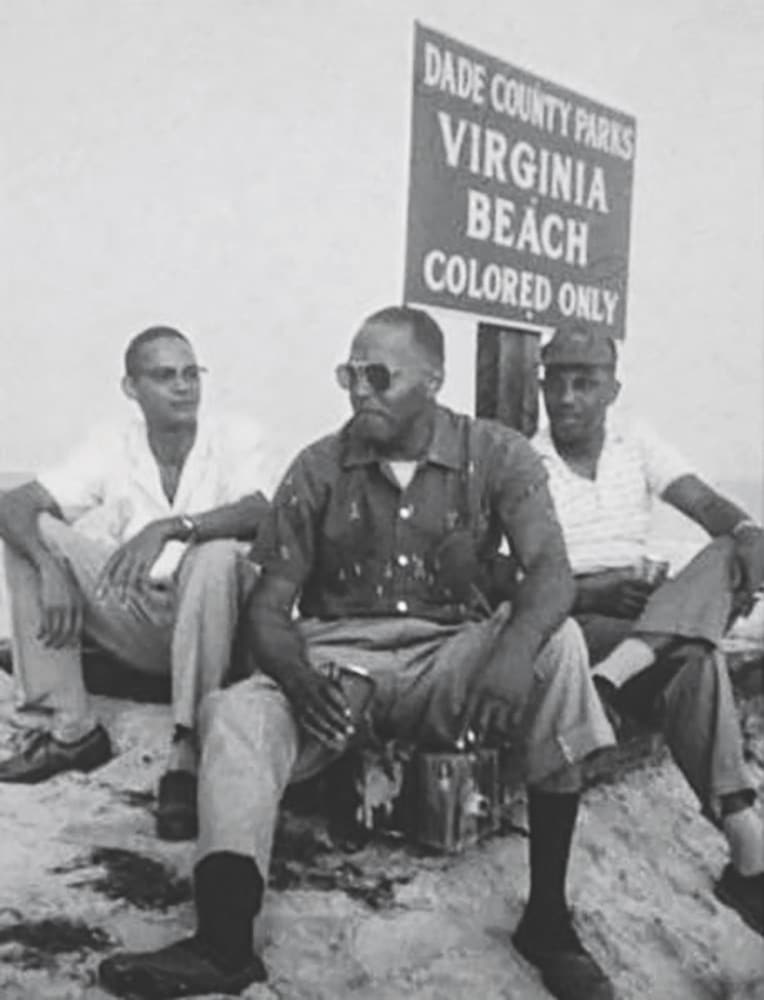
Virginia Key Beach was the only Miami beach where Black community members were allowed for swimming and recreation from 1945 through the end of segregation.
Photo courtesy of Historic Virginia Key Beach Park
Early on in the city’s history, in an attempt to provide beaches for the Black community, D. A. Dorsey, a Black millionaire, purchased what is now known as Fisher Island, tucked between Miami Beach and Virginia Key. Increasing property taxes required him to sell the property, and once again, the Black community was left without a beach. In 1945, determined to set justice in motion, seven courageous Black people, led by Lawson Thomas (who would later become the first Black judge in the South since Reconstruction), splashed into the water at all-white Haulover Beach. This protest was one of the first acts of civil disobedience in the name of civil rights for people of color. In response to the protest and out of fear of a bad reputation, the city made some unofficial exceptions exclusive to the Black population. One of these places was Virginia Key Beach, also known as Bears Cut.
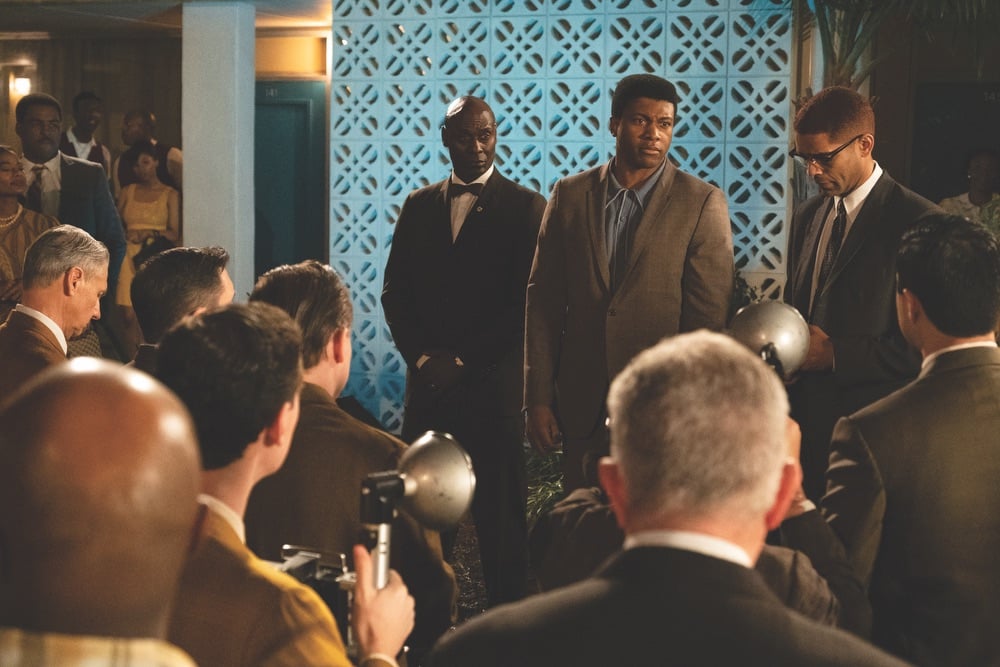
The 2020 award-winning film One Night in Miami explores race relations and segregation in Miami and throughout America, recounting an evening near Virginia Key Beach shared by Muhammad Ali, Malcolm X, Sam Cooke, and Jim Brown.
Photo by Patti Perret/Amazon Studios
Virginia Key Beach is the city’s northernmost natural barrier island in Biscayne Bay. On August 1, 1945, it officially became “Virginia Key Beach, a Dade County Park for the exclusive use of Negroes.” Today, visitors can access the island by car using the Rickenbacker Causeway, but back when the park opened, this did not exist. The island was only accessible by boat, so fishermen would pick up locals who wanted to spend the day on the beach. If visitors missed the last boat out, they had to sleep on the island. Virginia Key Beach became a cherished getaway for Miami’s citizens of color, a social gathering place, and even a sacred site for religious purposes. Many new Caribbean, South American, and Cuban immigrants found Virginia Key Beach the only beach they could visit or even preferred.
Virginia Key Beach became a cherished getaway for Miami’s citizens of color, a social gathering place, and even a sacred site for religious purposes.
When a hurricane swept across the island in the late 1940s, it was wiped clean of all picnic areas and enterprises. This cloud of devastation ended up with a silver lining, as it led to the building of now-historic establishments such as carousels, mini trains, concession stands, and bathhouses. These recreational amenities were the only ones of their kind for the area’s Black community and are still available for enjoyment today.
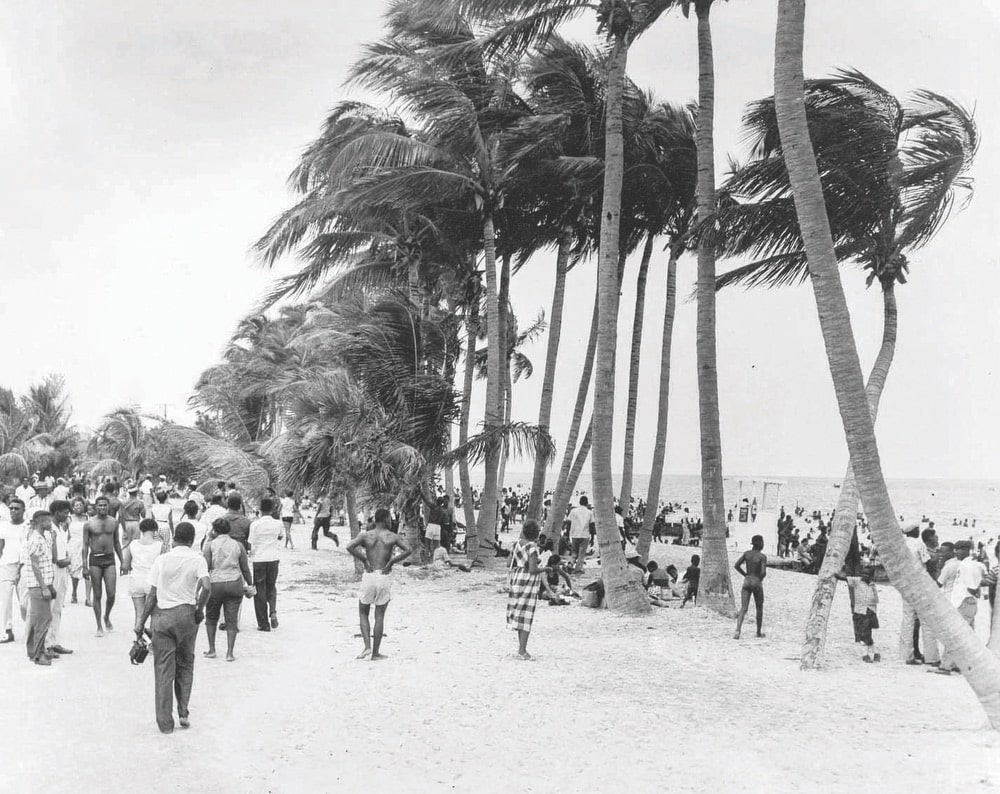
Visitors celebrating the Virginia Key Beach Park Trust’s seventy-fifth anniversary in 2020
Photos courtesy of Historic Virginia Key Beach Park
As segregation began to diminish over the years, many beachgoers started to go to Haulover Beach, Crandon Park, and South Beach to recreate. The county turned Virginia Key Beach over to the City of Miami in 1980, but due to the high maintenance and operations costs, the park was closed in 1982. The park has since been made available for daily rental, and it also serves as a facility for large entertainment events put on by the city and for training law enforcement.
In June 1999, when Miami was back in a boom, the area started to get more recognition from private developers looking to build on the beach park. In response, a diverse group of citizens, many of whom were environmentalists, marched to stop this development. These efforts established the group as the Virginia Key Beach Park Civil Rights Task Force. A year later, the Miami City Commission unanimously agreed to set up the Virginia Key Beach Park Trust to oversee the historic park’s development. Private citizens came together to serve as board members who created a plan to restore the park’s historical elements and build a museum to honor the park’s history for the public. The trust works diligently to provide the community with an escape for family events, community meetings, corporate events, and an immaculate beachfront for swimming and water activities.
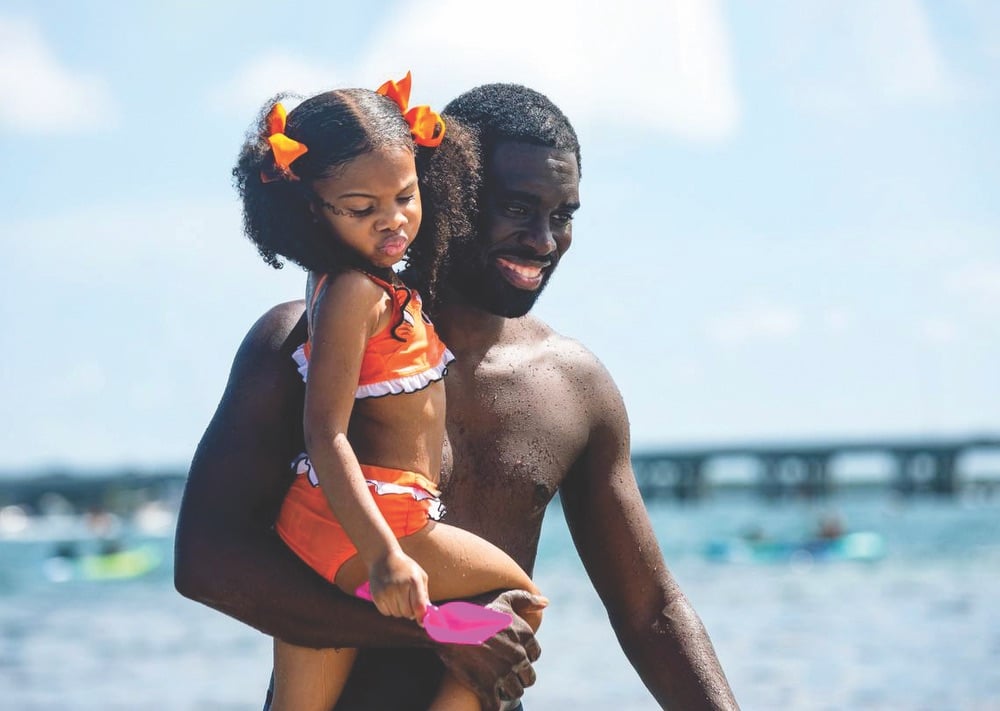
Many families and people of color enjoying Virginia Key Beach during its early segregated days
In August 2002, the park was placed on the National Register of Historic Places. According to their website, “The National Register of Historic Places is part of a national program to coordinate and support public and private efforts to identify, evaluate, and protect America’s historic and archeological resources.”
Virginia Key Beach Park could not be more deserving of this recognition. It also serves as a reminder of the significance of the historical property that we can never forget. By February 2008, the beach reopened to the public. Many of the historic amenities and new venues enjoyed by the community throughout the park’s history are available for all to enjoy. Today, ecosystem restoration projects, interpretive signage, and an interpretive/cultural center’s construction remain in the works.
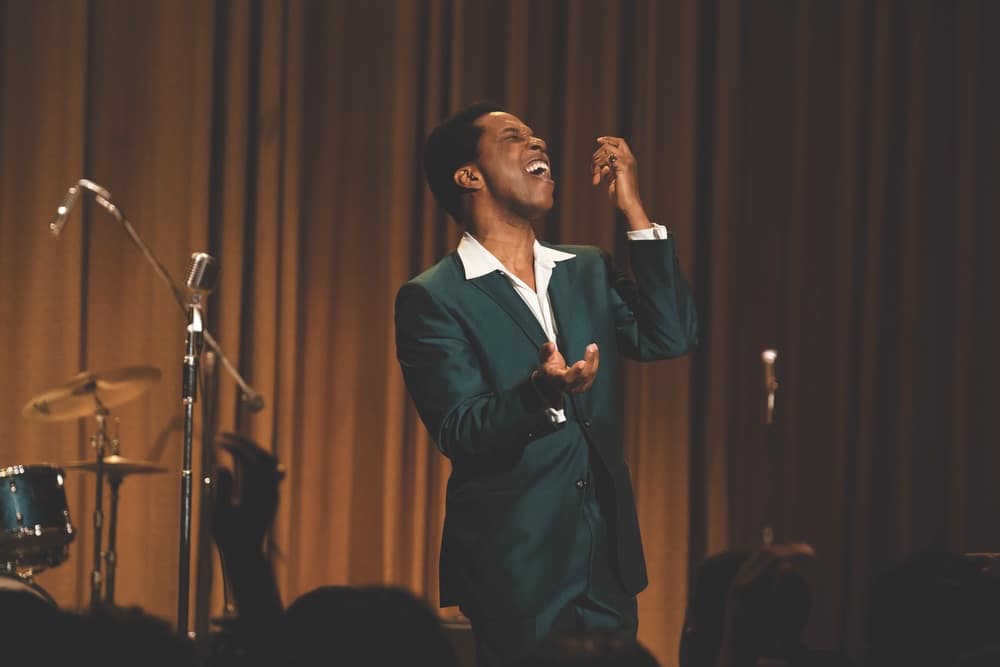
Leslie Odom JR. stars in ONE NIGHT IN MIAMI
Photo: Patti Perret
Courtesy of Amazon Studios
Virginia Key Beach is and always has been a diamond in the rough. Its history symbolizes a message of hope. They may not have realized it at the time, but those seven individuals who ran into the water at Haulover Park were paving the way for widespread inclusivity in the City of Miami. It is a beautiful yet heartbreaking story of a community whose fundamental right to enjoy themselves on the beach was nonexistent. They rose above the restrictions placed upon them by others and claimed their freedom right on the shores of Virginia Key Beach. This park is full of coastal dune lakes, walking trails, and a mile of beaches, plus new playgrounds where families can visit and revel in the magnificence of the ocean. It is a type of beauty that can never overshadow those who once sought peace there when everywhere else was out of reach.
— V —
Visit VirginiaKeyBeachPark.net to learn more or to plan a visit.
Share This Story!
KEEP UP WITH THE LATEST STORIES FROM VIE


















































































































































